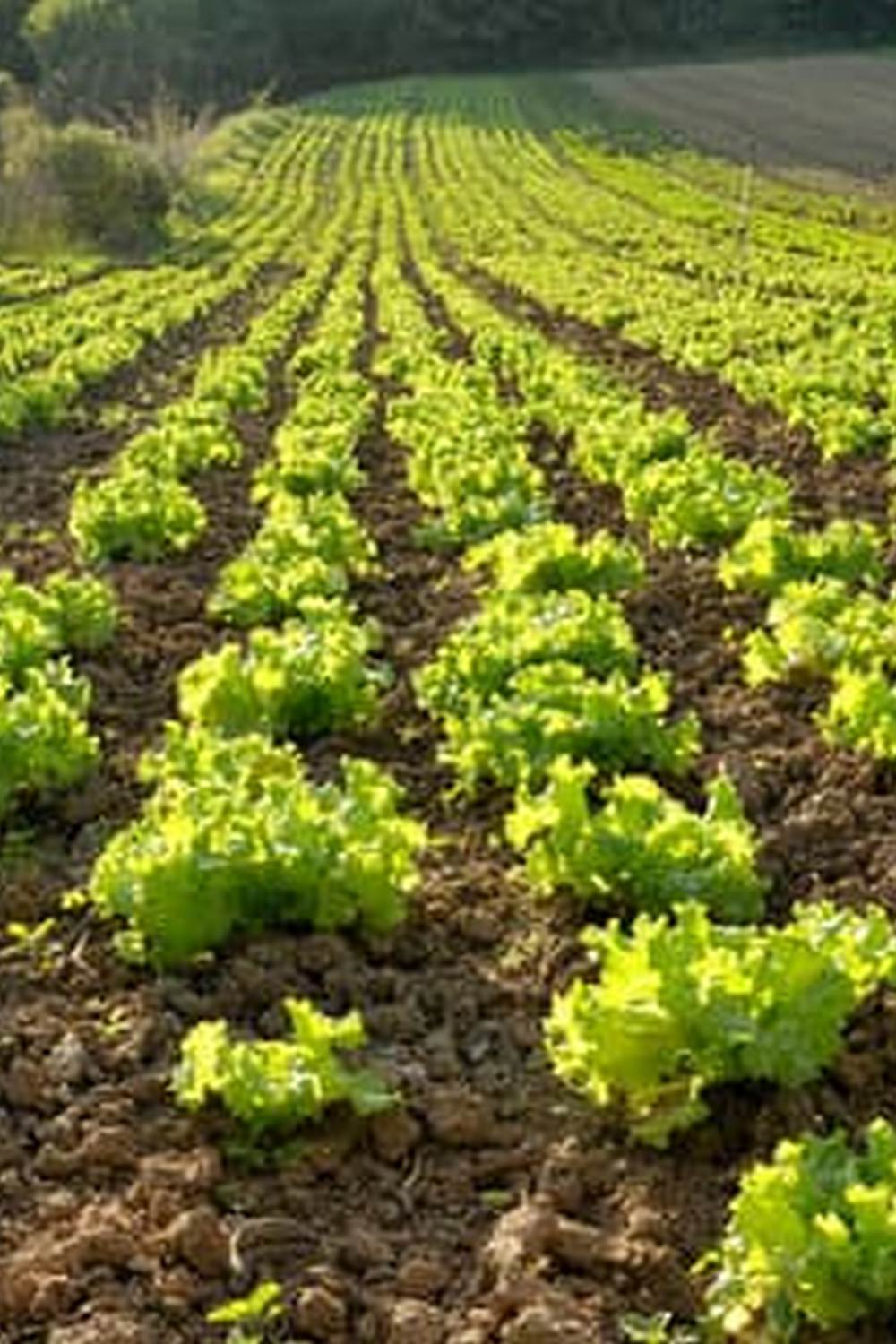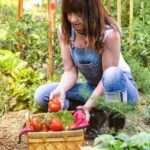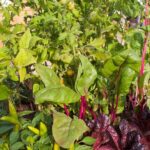Are you interested in growing your own fresh vegetables but don’t have a traditional garden space? Container gardening vegetables UK is the solution for you. In this article, we will explore the concept of container gardening and its benefits specifically for vegetable cultivation in the UK.
Container gardening is a versatile and convenient way to grow vegetables in small or limited spaces. It allows individuals with balconies, patios, or even just a windowsill to enjoy the satisfaction of cultivating their own produce. In the UK, where many people live in urban areas or have small outdoor spaces, container gardening offers a practical solution for homegrown vegetables.
In this section, we will delve into the basics of container gardening and why it is particularly well-suited for vegetable cultivation in the UK. From flexibility in location to better control over soil quality and drainage, container gardening offers numerous advantages for those looking to grow their own vegetables in the UK climate. Stay tuned as we explore the various aspects of successful vegetable container gardening through this article.
Best Vegetables for Container Gardening in the UK
When it comes to container gardening vegetables in the UK, it’s essential to choose the right vegetables that will thrive in the UK climate and do well in confined spaces. Here is a comprehensive list of the most suitable vegetables to grow in containers in the UK:
1. Tomatoes: This popular vegetable is well-suited for container gardening and can be grown on patios or balconies. They require a large enough container to support their growth and need plenty of sunlight.
2. Peppers: Bell peppers and chili peppers are great options for container gardening in the UK. They also require ample sunlight and a large enough container to accommodate their root system.
3. Lettuce: Lettuce is perfect for small containers and does well with partial shade, making it an ideal choice for gardens with limited sunlight.
4. Radishes: These fast-growing vegetables are perfect for beginners and do well in smaller containers. They also don’t require as much sunlight as other vegetables, making them a versatile option for container gardening in the UK.
5. Herbs: Herbs such as basil, parsley, thyme, and mint are excellent choices for container gardening and can thrive in small pots on windowsills or balconies.
6. Carrots: While they may not be the first vegetable that comes to mind for container gardening, carrots can actually do quite well in deep containers with loose soil.
7. Spinach: This leafy green thrives in cooler temperatures and partial shade, making it a great option for growing in containers in the UK.
When choosing which vegetables to grow in containers in the UK, it’s important to consider the space available, amount of sunlight exposure, and climate conditions specific to your location.
Choosing the Right Containers
When it comes to container gardening vegetables in the UK, selecting the right containers is crucial for the success of your vegetable garden. The type of container you choose can have a significant impact on the growth and health of your vegetable plants. When selecting containers for your vegetable garden, there are several factors to consider, including size, material, and drainage.
First and foremost, consider the size of the containers. Larger vegetables such as tomatoes and peppers will require larger containers to accommodate their root systems and allow for proper growth. On the other hand, smaller vegetables like lettuce or herbs can thrive in smaller containers. It’s essential to research the specific space requirements for each vegetable you plan to grow in order to select appropriately sized containers.
In addition to size, the material of the container is also important. Plastic, terracotta, wood, and fabric are all popular choices for vegetable containers. Each material has its own advantages and disadvantages in terms of insulation, breathability, and durability. It’s essential to choose a material that will provide adequate insulation for your vegetables while also allowing excess moisture to evaporate.
Finally, drainage considerations are crucial when selecting containers for vegetable gardening. Proper drainage is critical for preventing waterlogged soil, which can lead to root rot and other issues. Look for containers with drainage holes at the bottom or consider adding your own if necessary. Additionally, using a well-draining soil mix can further help prevent waterlogged soil and promote healthy root development for your vegetables in their containers.
By carefully considering these factors when choosing containers for your vegetable garden, you can set yourself up for success and ensure that your plants have an optimal environment in which to thrive as container gardening vegetables uk continues to gain popularity among urban gardeners throughout the country.
Soil and Fertilizer Requirements
When it comes to container gardening vegetables in the UK, choosing the right soil mix and fertilizers is crucial for successful growth. The limited space and controlled environment of containers mean that plants rely solely on the nutrients available to them, making it essential to provide them with the best possible growing medium.
Soil Mix
In order to create the ideal soil mix for vegetable container gardening in the UK, it’s important to use a high-quality potting mix specifically designed for containers. Look for mixes that are well-draining, lightweight, and rich in organic matter. Avoid using garden soil, as it can become compacted and drain poorly in containers. A good soil mix will provide essential nutrients while allowing excess water to drain away from the roots, preventing issues like root rot.
Fertilizers
While a good soil mix provides some nutrients, additional fertilization is often necessary for vegetables grown in containers in the UK. Slow-release or organic fertilizers can be added at planting time to provide a steady supply of nutrients throughout the growing season.
Liquid fertilizers can also be used periodically to ensure that plants have access to all the essential nutrients they need for healthy growth and abundant harvests. Be sure to follow manufacturer instructions when applying fertilizers, as over-fertilization can harm plants.
By understanding the specific soil and fertilizer requirements for vegetable container gardening in the UK, you can set your plants up for success and enjoy a bountiful harvest of fresh, home-grown produce. Whether you’re growing tomatoes on a sunny patio or salad greens on a balcony, providing your plants with the best possible growing medium will help them thrive throughout their growing season.
Watering and Maintenance
Watering and maintaining vegetable plants in containers in the UK can be a bit tricky, but with the right knowledge and techniques, it can be very rewarding. One of the main challenges faced by container gardeners in the UK is ensuring that their vegetable plants receive adequate water without overwatering them. The key is to strike a balance and pay close attention to the needs of each individual plant.
When it comes to watering your vegetable container garden, it’s important to remember that different vegetables have different water requirements. For example, tomatoes and peppers need more water than herbs like thyme or rosemary. It’s essential to research the specific needs of each vegetable you’re growing and adjust your watering schedule accordingly.
In addition to tailored watering schedules for each type of vegetable, proper drainage is crucial for the success of your container garden. Using pots with drainage holes or adding rocks at the bottom of non-draining containers can help prevent waterlogging, which can lead to root rot and other issues. Having a good understanding of your container’s drainage capabilities will help you avoid overwatering and ensure healthy plant growth.
| Vegetable Type | Watering Frequency |
|---|---|
| Tomatoes | Regularly, when soil feels dry about an inch below the surface |
| Peppers | Regularly, when soil feels slightly dry on top |
| Herbs (Thyme, Rosemary) | Sparingly, when soil is almost completely dry |
By being mindful of your vegetable plants’ individual needs and regularly checking the moisture levels in your containers, you can ensure they thrive while avoiding both under – and overwatering. Keep an eye out for signs that your plants may be getting too much or too little water, such as wilting or yellowing leaves, and adjust accordingly. With proper watering and maintenance practices, you’ll be well on your way to a successful container gardening experience with vegetables in the UK.
Pests and Disease Control
When it comes to container gardening vegetables in the UK, it’s important to be aware of the common pests and diseases that can affect your plants. By understanding these potential issues and knowing how to prevent and treat them, you can ensure a successful harvest of healthy vegetables. Whether you are growing tomatoes on your patio or cultivating herbs on your balcony, here are some effective methods for pest and disease control in container gardens.
One of the most common pests that can affect vegetable plants in containers is aphids. These small insects feed on plant sap, which can cause stunted growth and yellowing leaves. To prevent aphid infestations, regularly inspect your plants for signs of these pests and use insecticidal soap or neem oil to control them.
Another common issue is powdery mildew, a fungal disease that can affect a variety of vegetables such as zucchini and cucumbers. To prevent powdery mildew, ensure proper air circulation around your plants and avoid overhead watering.
In addition to pests and diseases, it’s important to consider preventive measures such as crop rotation, using clean potting soil, and practicing good sanitation to minimize the risk of problems in your container garden. By taking proactive steps and being vigilant about monitoring the health of your plants, you can enjoy a bountiful harvest of delicious vegetables from your container garden.
| Pest/Disease | Prevention/Treatment Method |
|---|---|
| Aphids | Regular inspection; use of insecticidal soap or neem oil |
| Powdery Mildew | Ensure proper air circulation; avoid overhead watering |
Harvesting and Storage
When to Harvest
The timing of the harvest is crucial in ensuring that your vegetables reach their peak flavor and nutritional value. For most vegetables grown in containers in the UK, such as tomatoes and peppers, it is best to harvest when the fruits are fully mature and have reached their optimal size.
Leafy greens like lettuce and spinach should be harvested when they are young and tender to prevent them from becoming bitter. Root vegetables like carrots and radishes should be harvested once they have reached a desirable size, typically indicated by the portion of the vegetable visible above the soil.
How to Harvest
Proper harvesting techniques vary depending on the type of vegetable being grown. Some vegetables, such as tomatoes and cucumbers, can simply be twisted or cut from the plant using pruners or scissors. Leafy greens can be harvested by cutting individual leaves from the plant with a sharp knife, allowing the remaining leaves to continue growing. When harvesting root vegetables, gently loosen the soil around the base of the plant before carefully pulling them out.
Storage Tips
After harvesting your vegetables, it’s important to store them properly to ensure maximum shelf life. Most vegetables grown in containers in the UK can be stored in a cool, dark place such as a refrigerator crisper drawer. However, some vegetables like potatoes and onions require different storage conditions – for example, potatoes need to be kept in a dry, dark place with good ventilation to prevent them from sprouting.
By following these guidelines for harvesting and storage, you can enjoy fresh, homegrown vegetables from your container garden for an extended period and reduce food waste.
Success Stories and Tips From UK Container Gardeners
In conclusion, container gardening for vegetables in the UK offers numerous benefits for individuals with limited outdoor space or poor soil quality. By using containers, individuals can successfully grow a wide variety of vegetables, even in urban environments.
This article has provided a comprehensive guide to getting started with container gardening, including information on selecting the best vegetables for UK climates, choosing the right containers, soil and fertilizer requirements, watering and maintenance tips, pest and disease control, as well as harvesting and storage guidance.
One of the key takeaways from this article is that successful container gardening requires attention to detail and proper care. From selecting the right containers and soil mix to monitoring watering and addressing potential pests or diseases, there are several factors to consider for a successful harvest.
Additionally, learning from experienced container gardeners in the UK can offer valuable insights and practical tips for newcomers. By following their success stories and advice, readers can feel inspired and empowered to start their own container gardens.
Overall, while container gardening vegetables in the UK presents its unique challenges such as variable weather conditions and limited space, it also provides an opportunity for individuals to connect with nature and grow their own fresh produce. By following the tips provided in this article and drawing inspiration from experienced container gardeners in the UK, readers can embark on their own successful journey into container gardening.
With dedication and patience, anyone can enjoy a bountiful harvest of homegrown vegetables straight from their own containers.
Frequently Asked Questions
What Veg Is Best for Container Gardening?
When it comes to container gardening, some of the best vegetables to grow include tomatoes, peppers, lettuce, spinach, and herbs like basil and parsley. These plants are well-suited for the limited space and soil in containers.
What Are the Easiest Vegetables to Grow in Pots UK?
In the UK, some of the easiest vegetables to grow in pots include cherry tomatoes, salad leaves, radishes, and dwarf varieties of beans and peas. These vegetables adapt well to pot growing and can thrive in smaller spaces.
What Vegetables Grow Well Together in a Container?
Certain vegetables grow well together in containers due to their complementary needs and growth patterns. For example, planting carrots with radishes can help deter pests, while combining lettuce with onions or garlic can maximize space by using vertical room for taller plants among low-growing ones.

If you’re looking to get into vegetable gardening, or are just looking for some tips on how to make your current garden better, then you’ve come to the right place! My name is Ethel and I have been gardening for years. In this blog, I’m going to share with you some of my best tips on how to create a successful vegetable garden.





